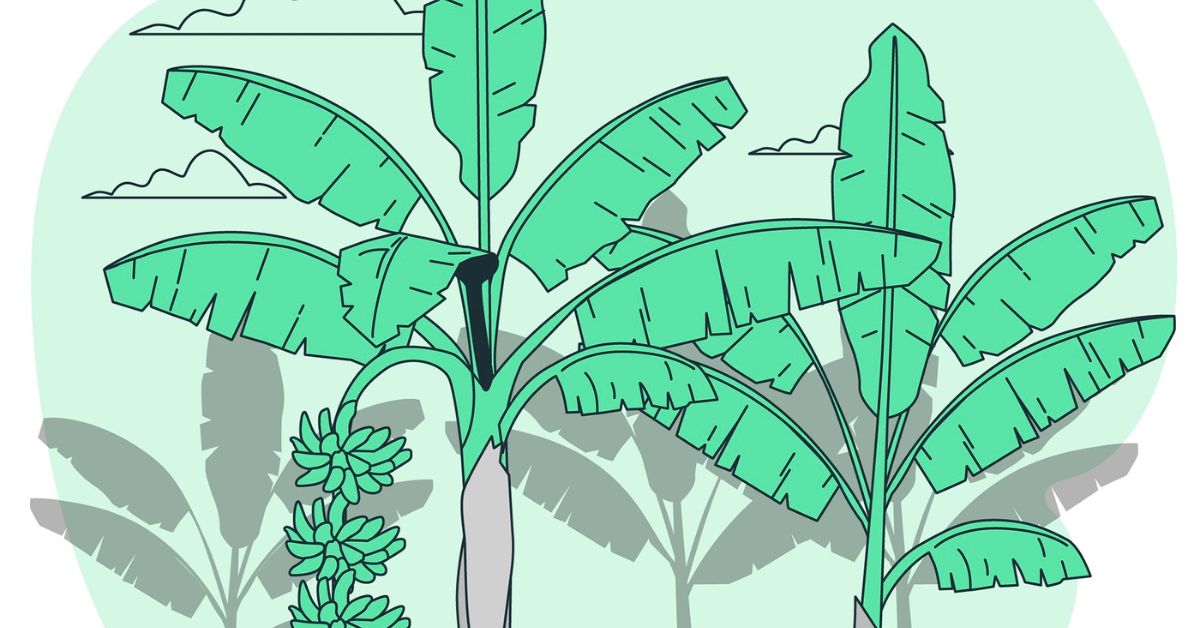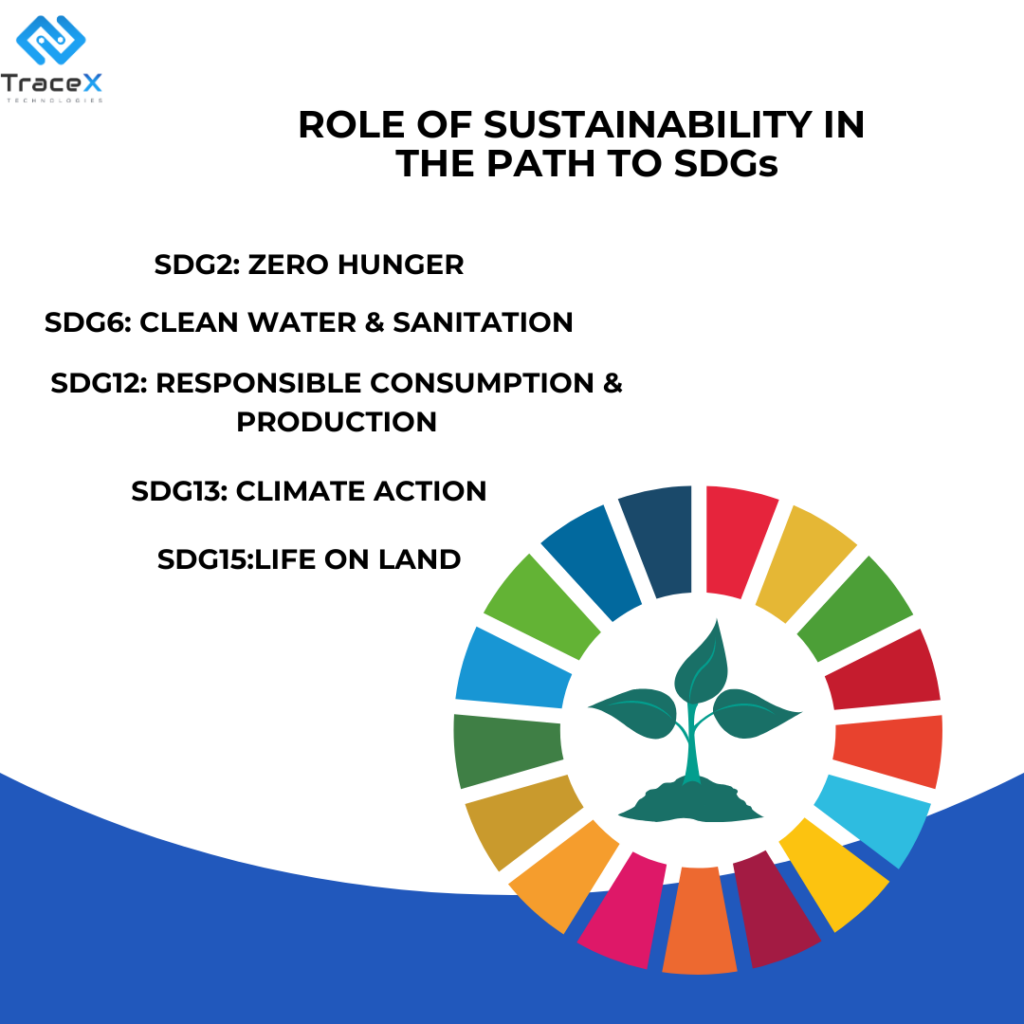Contact: +91 99725 24322 |
Menu
Menu
Quick summary: Discover the hidden environmental impact of your favourite fruit. Learn about the carbon footprint of banana production and explore sustainable solutions to reduce it. From farm to table, let's make bananas a greener choice

Bananas are one of the most popular fruits globally, with significant economic, nutritional, and cultural importance. Bananas, a seemingly simple and ubiquitous fruit, contribute to a complex global food system with an often-overlooked environmental impact. While the yellow delight is a staple in many diets, its production and distribution processes contribute to greenhouse gas emissions, deforestation, and water scarcity. Understanding the carbon footprint of bananas is crucial for developing sustainable production and consumption practices.
The carbon footprint of banana production encompasses the total greenhouse gas (GHG) emissions generated throughout the banana supply chain. This includes emissions from land preparation, cultivation, harvesting, transportation, retail, and ultimately, consumer use. By breaking down each stage of the supply chain, we can better understand the sources of emissions and identify decarbonization strategies.
1. Cultivation
Land Preparation and Planting: Land preparation involves clearing vegetation, tilling the soil, and planting banana seedlings. These activities typically involve machinery that consumes fossil fuels, leading to GHG emissions. The use of fertilizers and pesticides further contributes to emissions due to the energy-intensive production of these chemicals and their application in the fields.
Irrigation and Fertilization: Bananas require significant amounts of water, often necessitating irrigation systems. The energy used to pump and distribute water contributes to the carbon footprint. Additionally, the application of fertilizers, especially nitrogen-based fertilizers, releases nitrous oxide, a potent greenhouse gas.
Machinery Use: Tractors and other agricultural machinery used in land preparation, planting, and maintenance consume diesel or gasoline, leading to CO₂ emissions. Regular maintenance and efficient use of machinery can help minimize these emissions.
For a hectare producing 20 tons of bananas, the cultivation stage can result in substantial emissions. Efficient fertilizer use, optimized irrigation, and the use of low-emission machinery are critical for reducing the carbon footprint in this stage.
2. Harvesting and Post-Harvest Handling
Harvesting Process: Harvesting bananas involves manual labor and machinery. While the manual aspect has a lower carbon footprint, machinery used for transporting bananas from the field to storage facilities can be significant sources of emissions.
Post-Harvest Handling: After harvesting, bananas undergo packing, storage, and sometimes ripening processes. These activities consume electricity, contributing to the carbon footprint. Additionally, the use of packaging materials, such as plastic and cardboard, adds to the emissions, especially if these materials are not recycled or sourced sustainably.
Quality Control and Storage: Maintaining the quality of bananas requires controlled storage environments, often involving refrigeration. The energy used in these processes contributes significantly to the carbon footprint.
Emissions in this stage can be managed by improving energy efficiency in storage facilities, using sustainable packaging materials, and minimizing waste during handling.
3. Transportation
Local and Export Transportation: Bananas are transported from farms to local markets and export destinations. Local transportation typically involves trucks, which emit CO₂ based on fuel consumption and distance travelled. Export transportation often involves shipping, a significant source of GHG emissions due to the large distances covered.
Refrigeration During Transport: To maintain freshness, bananas are often refrigerated during transport. This refrigeration requires energy, contributing to the overall carbon footprint. Ensuring that transport vehicles and storage facilities are energy-efficient can reduce these emissions.
Transportation is a major contributor to the carbon footprint of bananas. Optimizing logistics, improving fuel efficiency, and using more sustainable transport methods are essential strategies for reducing these emissions.
4. Retail and Consumer Use
Retail Storage: Bananas are stored in retail facilities before being purchased by consumers. The energy used for refrigeration and lighting in these stores adds to the carbon footprint.
Consumer Storage and Waste: At the consumer level, bananas are stored in homes, often requiring refrigeration. Additionally, food waste at this stage contributes to emissions, especially if the waste ends up in landfills where it generates methane, another potent greenhouse gas.
Reducing emissions at this stage involves promoting energy-efficient storage practices and reducing food waste through better consumer education and waste management practices.
Optimizing the use of fertilizers and pesticides through precision agriculture can significantly reduce emissions. This involves applying the right amount of inputs at the right time and place, minimizing waste and emissions.
Implementing efficient irrigation systems, such as drip irrigation, can reduce water and energy use. Rainwater harvesting and soil moisture monitoring can further enhance water efficiency.
Maintaining soil health through practices such as crop rotation, cover cropping, and reduced tillage can improve carbon sequestration and reduce the need for chemical inputs.
Integrating renewable energy sources like solar and wind into farming operations can reduce reliance on fossil fuels. Solar panels can be used to power irrigation systems, machinery, and storage facilities.
Using energy-efficient machinery and maintaining it regularly can reduce fuel consumption and emissions. Electric or hybrid machinery can further lower the carbon footprint.
Improving the energy efficiency of storage facilities and transport vehicles can significantly reduce emissions. This includes using energy-efficient refrigeration systems and optimizing logistics to reduce travel distances and times.
Composting organic waste from banana production can reduce methane emissions from landfills and provide valuable nutrients for soil health.
Using recyclable or biodegradable packaging materials can reduce emissions associated with packaging production and disposal. Encouraging consumers to recycle can further lower the carbon footprint.
Educating consumers about the environmental impact of their food choices and encouraging them to buy sustainably produced bananas can drive demand for lower-carbon products.
Teaching consumers how to store bananas properly and use overripe bananas in recipes can reduce food waste and associated emissions.
Using carbon footprint assessment tools can help banana producers measure and manage their emissions. These tools can identify hotspots and track the effectiveness of emission reduction strategies. Blockchain technology can enhance supply chain transparency, allowing consumers to trace the journey of their bananas from farm to table. This transparency can build trust and encourage sustainable practices. The Internet of Things (IoT) and data analytics can optimize farming operations, improving efficiency and reducing emissions. Sensors can monitor soil moisture, crop health, and energy use, providing real-time data for decision-making.

TraceX’s Digital Monitoring, Reporting, and Verification (DMRV) platform is an advanced tool designed to streamline the assessment of the carbon footprint in agricultural processes, including banana cultivation. By leveraging cutting-edge technologies, TraceX DMRV provides comprehensive data collection, analysis, and reporting capabilities to help agribusinesses accurately measure and reduce their greenhouse gas (GHG) emissions.
TraceX DMRV integrates various IoT devices and sensors to collect real-time data on multiple aspects of banana cultivation. These devices can monitor soil moisture, temperature, irrigation levels, and fertilizer usage, providing continuous and accurate data on the cultivation process.
TraceX DMRV employs sophisticated algorithms to calculate GHG emissions based on the collected data. This includes emissions from fuel usage in machinery, fertilizer application, irrigation systems, and other agricultural practices. The platform ensures precision in these calculations, adhering to international standards and protocols. The platform’s advanced analytics capabilities break down the carbon footprint into specific components, allowing for detailed insights into where the highest emissions occur.
TraceX DMRV enables continuous monitoring of carbon emissions throughout the banana cultivation cycle. This ongoing assessment ensures that any changes in practices or inputs are immediately reflected in the carbon footprint data, allowing for timely adjustments. The platform generates comprehensive and transparent reports that detail the carbon emissions associated with each stage of banana cultivation. These reports are crucial for regulatory compliance, sustainability certifications, and communication with stakeholders.
By pinpointing specific areas of high emissions, TraceX DMRV helps agribusinesses focus their efforts on the most impactful changes. For example, if irrigation is identified as a major contributor to emissions, businesses can explore more efficient irrigation methods. The platform provides recommendations for best practices in sustainable agriculture based on the data analysis. These practices include optimized fertilizer use, improved irrigation techniques, and energy-efficient machinery use, all aimed at reducing the carbon footprint.
With increasing regulatory pressures on GHG emissions, TraceX DMRV ensures that banana cultivation practices comply with national and international environmental standards. The platform’s detailed reporting facilitates adherence to these regulations, minimizing the risk of penalties. Many sustainability certifications require detailed carbon footprint assessments. TraceX DMRV’s robust data collection and reporting capabilities help agribusinesses meet the criteria for these certifications, enhancing their marketability and consumer trust.
Modern consumers demand transparency regarding the environmental impact of the products they purchase. TraceX DMRV provides the data needed to transparently communicate the carbon footprint of banana cultivation, building consumer trust and brand loyalty.
The carbon footprint of banana production encompasses emissions from various stages of the supply chain, from cultivation to consumer use. By understanding these emissions and implementing targeted strategies for reduction, we can make banana production more sustainable. Embracing sustainable farming practices, leveraging renewable energy, optimizing logistics, managing waste, and engaging consumers are key steps towards reducing the carbon footprint of bananas. Additionally, aligning these efforts with the SDGs underscores the broader impact of sustainable banana production on global sustainability goals.
As we move forward, it is essential for all stakeholders in the banana supply chain to collaborate and innovate, driving sustainability from the farm to the table. By doing so, we can ensure that bananas remain a nutritious and environmentally friendly choice for future generations.
